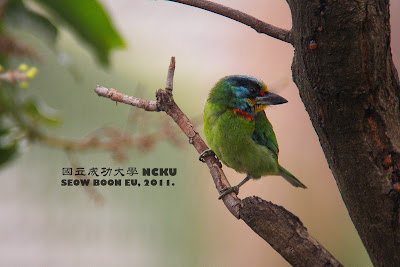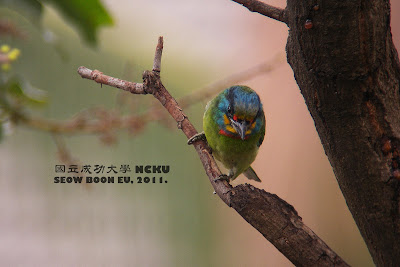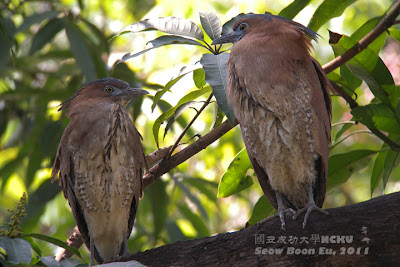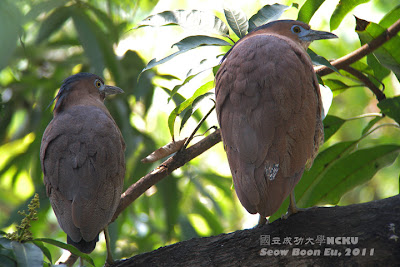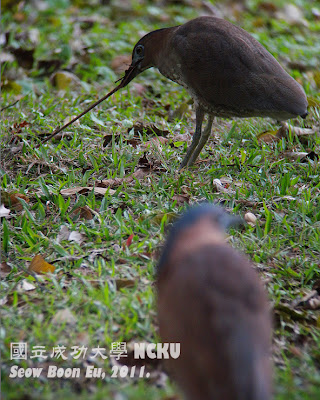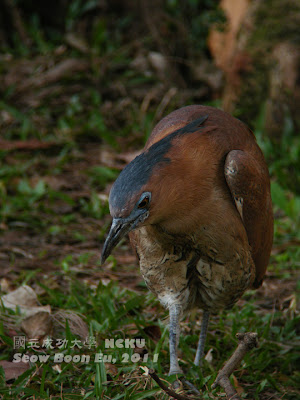I heard the owls were calling very sharply in the forested area during our owling session at around 9pm, indeed, it was an abnormal and eerie call during the month of the Chinese hungry ghost festival, but I strongly believe the eerie call must be the call of the owls or any nocturnal wildlife. In fact, I saw the hungry owls instead of hungry ghosts.
At the beginning of the search, it's difficult for me to locate them, however, with my passion and patience, I finally found two adorable owls with the white head robe perching on one of the big trees. I was really lucky to locate them, and had a wonderful moment of digiscoping and recording their eerie call.
It's my first picture and call record of a pair of Brown Wood Owl fledglings, probably the first fledgling call recorded in Malaysia.
 |
| Owlsome! |
Click on the play button to listen to the recorded call of one of the fledglings :
WARNING: this recorded call is for learning purposes only, do not use this as a bird call playback, you may be seriously attacked by the owl and other predators at night.
Click HERE to view the Brown Wood Owl which I digiscoped during the day time about a year ago.
A Gentle Reminder: Owl is currently threatened by illegal poaching for exotic meat market, click HERE to read the recent news report. Please free and save the owls.
Happy Owling. Keep Watching, Keep Listening and Keep Exploring.
*Special thanks to Peggy and Connie Khoo for their help during the recording.






























